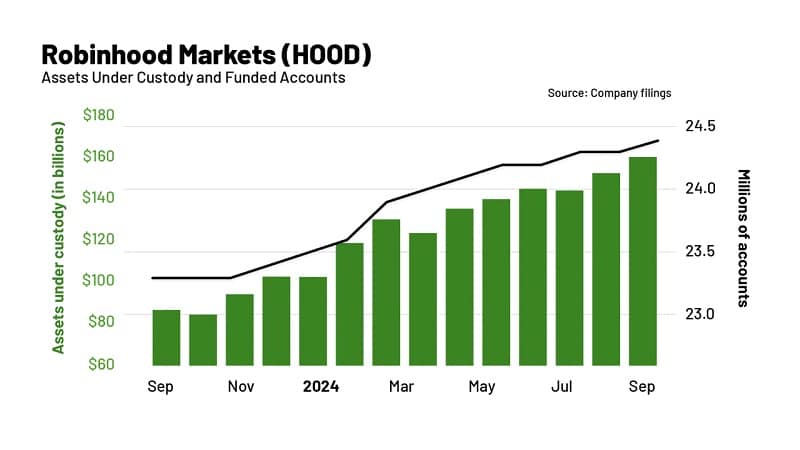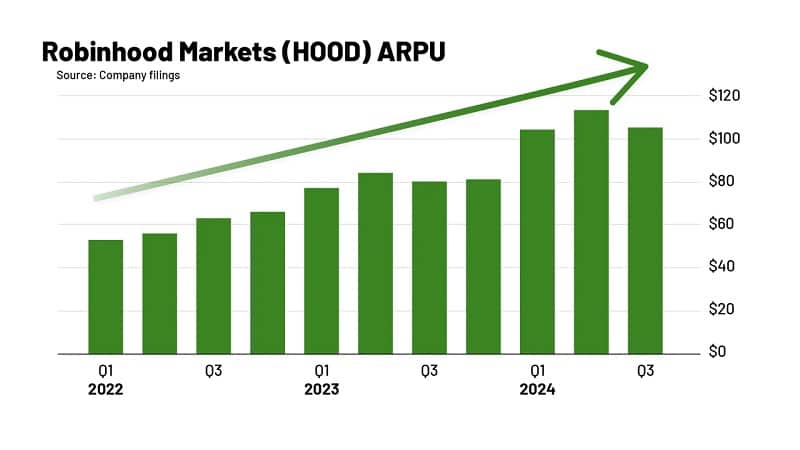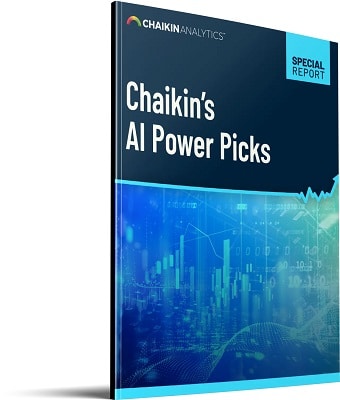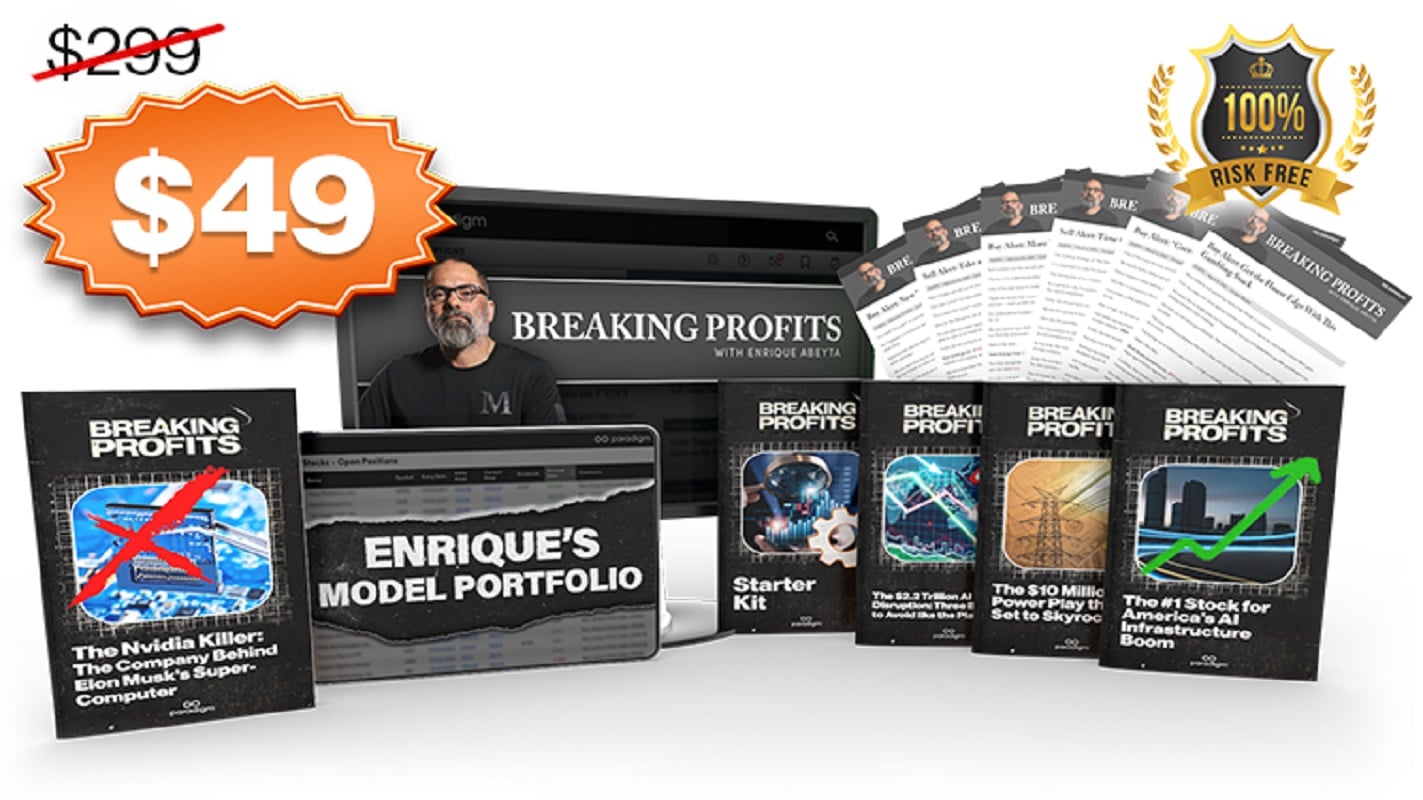If you suspect a major market crash is around the corner, you might be right. Marc Chaikin also believes we’re on track to experience a historic market collapse in 2026 during Donald Trump’s second year in office. But here’s the surprising part: this crash won’t happen for the reasons you might expect. It won’t be triggered by Trump’s executive orders or his tariff threats, inflation, rising national debt, or any of the other headline risks dominating the financial news.
Instead, this crash ties back to a powerful and predictable market cycle that’s been playing out since the 1930s. It’s driven by the natural flow of money and investor psychology and understanding it could make all the difference for your portfolio.
This article goes in further details about The Election Cycle, digging into the risks and opportunities it will create. We’ll explore some ideas how to shift your money before the next crush occur.
Moreover, we’ll go deeper into Marc Chaikin’s strategy and how he uses his Power Gauge to create great money-making opportunities.
One of them is Robinhood (HOOD), and you will learn exactly why it has the potential to be one of the best-performing stocks over the next 12 months. We will also review his Power Gauge Report service to help you decide is this approach right for your needs.
Recommended:

50-year stock market legend Marc Chaikin just revealed his “secret weapon”… along with a powerful, little-known strategy that could help you potentially lock in rapid returns – even as markets crumble. Marc says that in the coming months, you are going to need it. So if you have any money in the market, you need to see this now.
Uncovering One of Wall Street’s Most Profitable Secrets: The Election Cycle
You may not have heard of it before — and that’s no surprise. The Election Cycle is one of those powerful, time-tested patterns that Wall Street insiders have quietly relied on for over a century, while keeping everyday investors in the dark.
Chaikin admits that he didn’t discover this cycle himself. But over his 50+ years on Wall Street, he learned how to track and apply its patterns. And he confidently shared that it’s one of the most reliable and profitable market indicators he’s ever used.
Read further for details how this cycle has played out repeatedly over the past 100+ years, and why Chaikin believes that 2025 will deliver big gains. Followed by a sharp market downturn in 2026, during the second year of President Trump’s new term.
What Is the Election Cycle?
At its core, the Election Cycle tracks the historical tendencies of the U.S. stock market across each year of a presidential term.
For example, back in January 2024, Chaikin told Business Insider that stocks would have a strong year. Not because he knew how the election would play out, but because election years themselves are historically great for the markets.
The data speaks for itself: For over a century, election years have consistently delivered strong returns, regardless of who’s running or which party wins.
Why Does the Election Cycle Work So Well?
There’s been a lot of research into why this pattern exists — with some of the most extensive work done by Yale Hirsch, publisher of the “Stock Trader’s Almanac”. Hirsch’s data goes back to 1833, and his conclusion is simple: Incumbent administrations often go to great lengths to stimulate the economy and markets to boost their chances of reelection.
Over the past 75 years, the average return during an election year is about 5%. But when an incumbent seeks reelection? That average jump to nearly double, regardless of who wins.
Bottom line: Election Cycle isn’t a political tool. It’s purely data-driven, based on over a century of market history.
How To Use Election Cycle To Work For You
Here’s the most important lesson that five decades on Wall Street have taught Chaikin: Ignore the noise and focus on the data. Data is showing:
- 2025 is historically set up for a strong market year.
- 2026 — the second year of Trump’s term — is statistically primed for a major market correction.
When that downturn arrives, plenty of people will blame the president. But the data proves it’s not about who’s in the White House. The pattern holds regardless of party or policy.
How the Election Cycle Works
Every president’s term follows the same four-year structure, and that’s the key to the Election Cycle.
- Year 1 (Post-Election Year): That’s 2025 — the first year of Trump’s new term.
- Year 2: 2026 — historically one of the worst years for stocks.
- Year 3 (Pre-Election Year): 2027 — typically a strong year for gains.
- Year 4 (Election Year): 2028 — another year with historically strong returns.
The takeaway is simple: Some years deliver much better returns than others — and Year 2 (2026) is the most dangerous.
Chaikin’s Expectations for 2025
Over the past 40 years, 9 out of 10 first years in the cycle delivered positive returns. That’s a 90% success rate, with the average gain reaching 21% — more than twice the long-term average annual return of the S&P 500.
That’s where we are right now — 2025 is Year 1, and the odds heavily favor a strong year for stocks.
But what comes next in 2026 could be even more important for protecting your wealth.
Why Year Two Is Historically the Most Dangerous for Stocks?
Historically the second year of any presidential term is, by far, the worst for the stock market — with the highest probability of a significant downturn or crash.
According to Ned Davis Research, which tracks market data going back to 1933:
- Average market returns in Year Two are 75% lower than in Year One (the postelection year).
- They’re also 80% lower than in Year Three (the preelection year).
- And 59% lower than in Year Four (the election year).
Why Does This Pattern Repeat — Again and Again?
Like many long-standing technical indicators, there’s no single definitive reason — but Chaikin shared several credible theories.
One likely explanation is that presidents often front-load difficult or unpopular policies during their first year in office, aiming to fulfill campaign promises early.
However, the economic and market impacts of those policies tend to surface in Year Two — leading to increased volatility and weaker returns.
Given the scale of the changes President Trump has already begun to implement, 2026 could look dramatically different from 2025, affecting millions of Americans and countless businesses.
Trump has already signed a flurry of executive orders, along with dozens of other policy shifts that could trigger major capital flows into the market this year.
But what drives stocks higher in Year One is often based on optimism, and history shows those expectations frequently unravel in Year Two.
Another factor shared by Chaikin is the midterm elections, which take place during the second year of every presidency.
The uncertainty around the balance of power in Congress and how it will shape future policies tends to weigh heavily on investor sentiment.
And as every experienced investor knows, uncertainty is the enemy of stable markets.
Ultimately, why this happens is less important than the fact that it consistently happens.
Decades of data, tracked from Charles Schwab and T. Rowe Price to Morgan Stanley and Goldman Sachs, confirm that Year Two is the weakest and riskiest period in the cycle.
It’s a pattern so reliable that quantitative analysts like Chaikin have built entire strategies around it, using the predictable nature of these market moves to guide their decisions.
How To Use These Analysis to Build Your Wealth?
Right now, we know 2025 is statistically set up for strong gains, driven by the optimism of a new administration and early policy momentum.
But we are expecting 2026 to bring a major downturn, following the exact same Election Cycle pattern we’ve seen for over a century.
The key to navigating this successfully isn’t just knowing what’s coming — it’s knowing exactly which stocks to own during the boom of 2025, and which to avoid heading into the downturn of 2026.
The right strategy can turn this predictable cycle into one of your most profitable opportunities ever, if you know how to position yourself correctly.
Power Gauge – Chaikin’s Secret Weapon
Let me introduce you to what Chaikin considers his “Secret Weapon”:
Over the course of his 50-year career on Wall Street, he closely studied the strategies and decision-making processes of the world’s most successful investors. He identified the 20 most critical factors they relied on when deciding which stocks to buy — and which to avoid.
He used those insights to build a system designed for everyday investors. It effectively predicts tomorrow’s stock ratings from Wall Street analysts… today.
The real power of this system lies in its ability to anticipate how institutional money is about to flow — based on whether major firms are likely to rate a stock as a Buy, Sell, or Hold.
This system, which represents the culmination of Chaikin’s life work as a quant analyst, is called The Power Gauge.
And it works remarkably well. In fact, back in 2019, his system won the award for “Best Investment Research Product of the Year”.
For those of you that are not familiar with Chaikin’s work, he is also teaching regular investors how to use The Power Gauge themselves with incredible, real results.
While the Election Cycle gives us a high level of confidence that 2025 will likely deliver strong stock market gains — followed by a significant downturn in 2026, it doesn’t help us pinpoint the very best opportunities. We can’t really identify which stocks are most likely to outperform, and which are more likely to struggle. That’s where The Power Gauge could come in handy.
Best Stocks Ty Buy Now According To Power Gauge
Chaikin has used The Power Gauge to compile a shortlist of his top stock recommendations — companies he believes could double (or more) in value in the very near future.
Currently, there are nine companies on this exclusive list, though he constantly adds and removes names as new opportunities emerge. The only way to access this list — and all future updates — is through his research service: The Power Gauge Report.
The key to successful investing is staying ahead, and The Power Gauge is a great tool to identify the next wave of market winners.
For over a decade, The Power Gauge has a record of uncovering the market’s biggest opportunities — in bull and bear markets — across every sector, industry, and overlooked corner of the U.S. stock market.
Power Gauge #1 Recommendation Today
According to Chaikin, one of the top investment opportunities right now, handpicked from a short list of stocks ranked VERY BULLISH by the Power Gauge is Robinhood (HOOD).
Robinhood is a relatively new player allowing users to trade stocks, cryptocurrencies, and even fractional shares of major companies. Robinhood is shaping up to be the investment platform for the next generation.
With financial regulations likely to ease under the Trump administration, and an ongoing trend toward democratizing investing, Robinhood is positioned to be a big winner for years to come.
Just look at how rapidly the company’s assets are growing:
And check out how quickly average revenue per user (ARPU) is climbing:
In just the past few years, Robinhood has doubled the revenue it generates from each customer— and Chaikin believes this is only the beginning. He is confident that this stock has tremendous upside potential over the next year and beyond.
Chaikin speaks about Robinhood as a younger version of Interactive Brokers, a company that revolutionized the brokerage industry. Interactive Brokers has soared 300% in under three years, and he is expecting Robinhood to deliver even greater returns in the coming years.
The Power Gauge currently rates Robinhood “Extremely Bullish”, based on a combination of strong financials, earnings trends, technical momentum, and positive analyst sentiment.
Power Gauge Report at A Steep Discount
For short time you can get access to Chaikin’s Power Gauge research, including a special chance to try it out at a deep discount, with zero risk.
Institutional investors have paid as much as $5,000 per month to access Chaikin’s software and recommendations.
And if you wanted to access similar tools through a Bloomberg terminal, you’d pay around $24,000 a year.
With this offer you have a chance to try Power Gauge for one full year for only $149, including $3,000 worth of research, Chaikin’s current recommendations, and FREE bonuses.
This is easily one of the best offers you’ll find not only because the price is dramatically lower than usual, but because you can try it out for 30 full days, entirely risk-free. And if, for any reason, you decide the service isn’t right for you, you can request a full cash refund anytime within the first 30 days.
What Is Included with This Offer?
Here’s what you’ll get:
- SPECIAL DISCOUNT: 70% OFF One full year of Power Gauge Report. You’ll receive a brand-new investment recommendation every month, fully vetted through The Power Gauge, to help you target the next major winners. And when it’s time to sell and lock in profits, you’ll receive clear, timely alerts directly within The Power Gauge Report.
- One Year Access to the Power Gauge Rating System. You cansearch over 5,000 stock tickers to instantly see whether a stock you own (or are considering) is rated Bullish, Neutral, or Bearish. In today’s volatile market, this tool is absolutely essential — once you try the Power Gauge, you’ll wonder how you ever invested without it.
- You’ll receive full access to Chaikin’s Model Portfolio for one year, which includes investment recommendations from The Power Gauge Report. Typically, it includes 8 to 10 stocks at a time. Plus, every time Marc identifies a new opportunity, you’ll be the first to know, with timely alerts delivered straight to your inbox.
- NEW SPECIAL REPORT: Chaikin’s AI Power Picks.
Marc has released his latest shortlist of the top AI stocks lighting up the Power Gauge right now. Each of these companies has the potential to double (or more) in value before the bull market peaks.
- NEW SPECIAL REPORT: 3 Wildly Popular Stocks to Avoid Right Now.
Marc has identified three stocks that currently rank among the most dangerous in the Power Gauge system. Holding onto similar stocks in 2023 could have cost you up to 60% of your capital — so this exclusive report could save you thousands in the year ahead.
- Market Crash Alerts and Updates. For the next 12 months you will get updates on major market shifts detected by the Power Gauge. With a significant downturn projected for 2026, you’ll stay ahead of the rest.
- Daily Email Alerts. These quick updates highlight the biggest risks, opportunities, patterns, and trends Marc is identifying. They will help you make smarter decisions with your money every day.
- Special Reports & Research Library. As a subscriber, you’ll gain access to Marc’s entire collection of special reports and research issues.
- BONUS GIFT ($2,499 Value): Special Mystery Gift. As part of this offer, you’ll receive free access to an exclusive Chaikin Analytics presentation that others recently paid up to $2,499 to attend live.
Is Power Gauge Report Right Tool For Me?
Power Gauge Report is one of many tools you can use to start making money. Its average two-year gain is reported at 8.4%. Just follow Chaikin’s simple strategy— invest equal amounts in all of his current recommendations — and you’ll be well positioned for tremendous success in 2025.
One of the biggest concerns for our country in the years ahead is the rapidly widening wealth gap, especially between those who understand how to safely and effectively grow their wealth in the markets, and those who don’t.
That’s exactly why Chaikin often refers to the Power Gauge as “The Great Equalizer.” No matter how much money you can afford to start with — or how much you make — this system has the potential to dramatically improve your financial future.





























